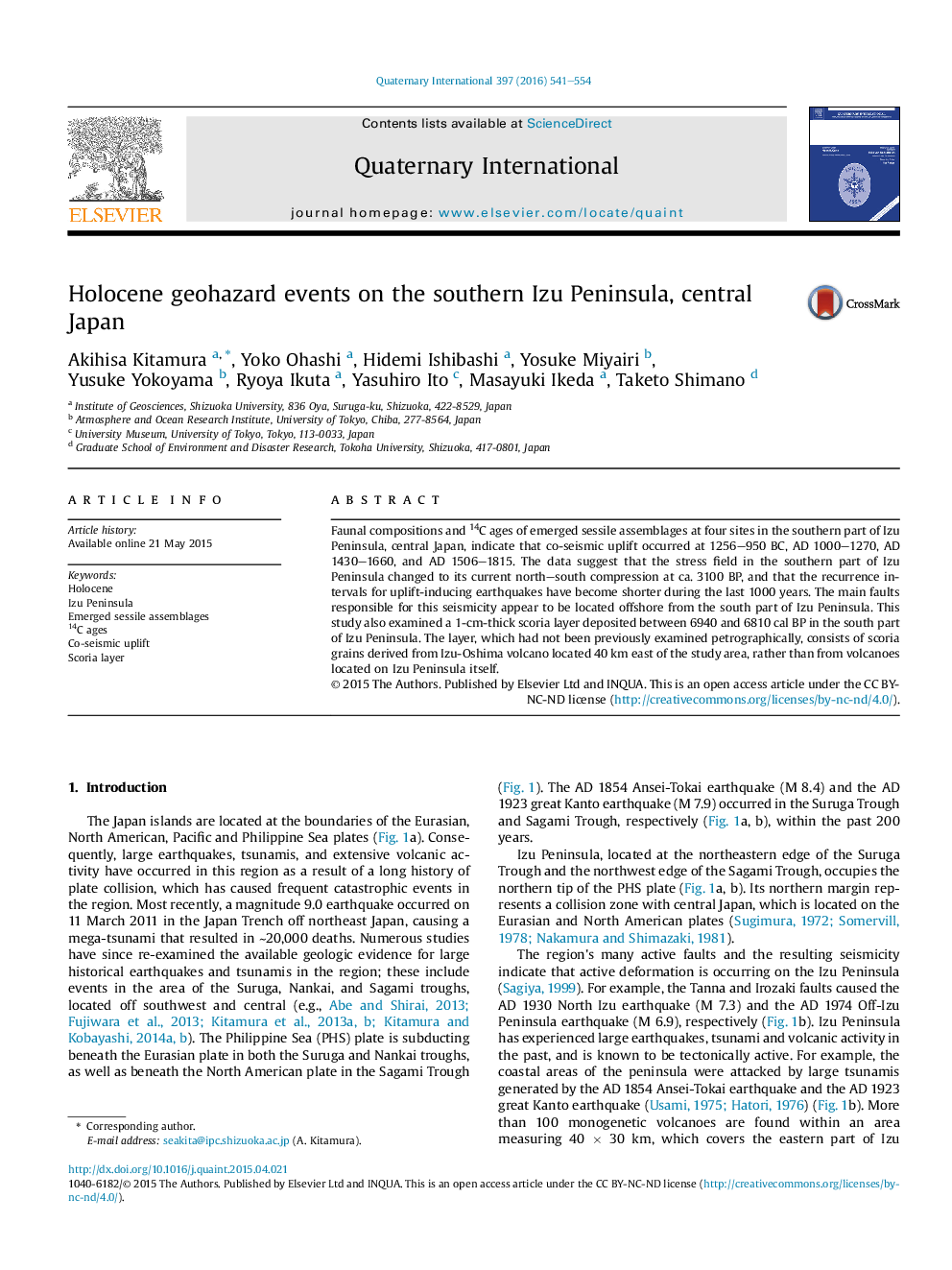| Article ID | Journal | Published Year | Pages | File Type |
|---|---|---|---|---|
| 7451391 | Quaternary International | 2016 | 14 Pages |
Abstract
Faunal compositions and 14C ages of emerged sessile assemblages at four sites in the southern part of Izu Peninsula, central Japan, indicate that co-seismic uplift occurred at 1256-950 BC, AD 1000-1270, AD 1430-1660, and AD 1506-1815. The data suggest that the stress field in the southern part of Izu Peninsula changed to its current north-south compression at ca. 3100 BP, and that the recurrence intervals for uplift-inducing earthquakes have become shorter during the last 1000 years. The main faults responsible for this seismicity appear to be located offshore from the south part of Izu Peninsula. This study also examined a 1-cm-thick scoria layer deposited between 6940 and 6810 cal BP in the south part of Izu Peninsula. The layer, which had not been previously examined petrographically, consists of scoria grains derived from Izu-Oshima volcano located 40 km east of the study area, rather than from volcanoes located on Izu Peninsula itself.
Related Topics
Physical Sciences and Engineering
Earth and Planetary Sciences
Geology
Authors
Akihisa Kitamura, Yoko Ohashi, Hidemi Ishibashi, Yosuke Miyairi, Yusuke Yokoyama, Ryoya Ikuta, Yasuhiro Ito, Masayuki Ikeda, Taketo Shimano,
